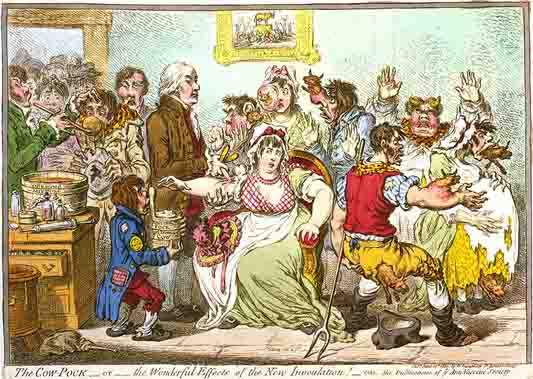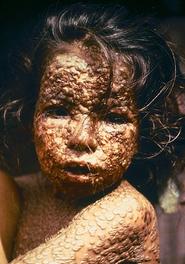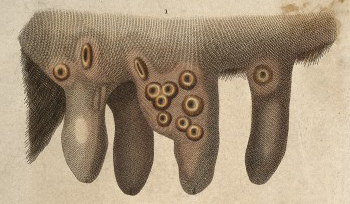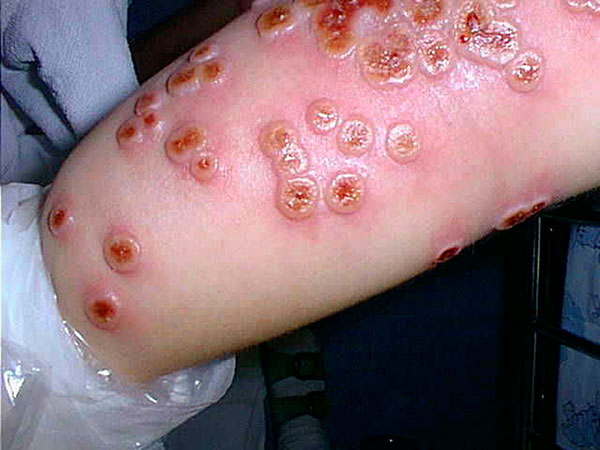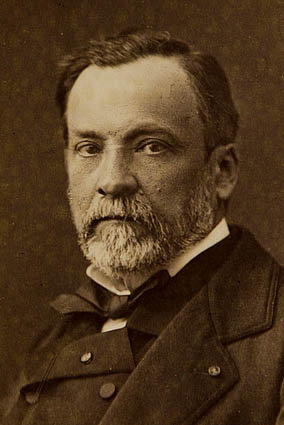 | ||||
Early History of Human Immunology
Discoveries of Edward Jenner & Louis Pasteur
CLASS NOTES from Science Prof Online
Edward Jenner and the First Vaccine (1790s)
The Dreaded Smallpox: Edward Jenner’s legacy was a vaccination for smallpox; a disease greatly feared during his lifetime. Smallpox killed a third of those who caught it and the individuals who did survive were often badly disfigured.
Old Wives Tales of Immunity: Jenner was a physician who practiced in the rural English countryside. Being a country doctor, he was familiar with the
Article Summary: Early discoveries that led to today's vaccines happened almost by chance. The astute observations of Jenner & Pasteur became the foundation of immunology.
Early History of Human Immunology: Jenner & Pasteur
Page last updated: 4/2013
 | ||||
You have free access to a large collection of materials used in a college-level introductory microbiology course. The Virtual Microbiology Classroom provides a wide range of free educational resources including PowerPoint Lectures, Study Guides, Review Questions and Practice Test Questions.
Girl infected with smallpox. Bangladesh, 1973.
SCIENCE PHOTOS
 | ||||||
 | ||||||
SPO is a FREE science education website. Donations are key in helping us provide this resource with fewer ads.
Please help!
(This donation link uses PayPal on a secure connection.)
SPO VIRTUAL CLASSROOMS
SCIENCE VIDEOS
Cowpox and Smallpox: Cowpox was a mild disease evidenced by discomfort, aching, pustules, some swelling; symptoms that only lasted a few days. In contrast, smallpox was a very serious disease that resulted in massive disfigurement, sometimes blindness, and often death.
Jenner’s First ‘Vaccine’: Jenner suspected there to be a connection between the fact that milkmaids were commonly known to get cowpox, but not smallpox. He decided to test this theory by placing the scab from a cowpox lesion into a cut made in the arm of a young man. He then deliberately injected his human guinea pig with smallpox. The infected young man became ill, but after a few days made a full recovery with no side effects.
Laughing Stock Who Had the Last Laugh: At first his peers doubted the safety and efficacy of his treatment, and he was publicly humiliated when he presented his findings in London. But eventually the value of the cowpox inoculum could not be denied and Jenner’s discovery changed the world.
Pasteur’s Attenuated Vaccines (1870s)
Fowl Cholera of Chickens: Physicians of the time observed that individuals who recover from an infectious disease are sometimes immune from future attacks. This knowledge prompted Louis Pasteur, a French biologist and chemist, to try to find a way to prevent fowl cholera, an infectious disease of chickens.
Engraving of cowpox lesions on a cow udder (left). Cowpox eruptions on human arm (right).
Edward Jenner (1749-1823). Doctor who discovered vaccination.
By leaving the microbes uncared for in the laboratory growth media for an extended period of time, the organisms had been weakened or attenuated. Pasteur concluded that inoculation with weakened microbes could render immunity to the disease that that particular microbe caused.
Anthrax and Rabies Vaccines: Pasteur then experimented with modifying other organisms such as anthrax, and the virus causing rabies. Ultimately, through his experimentation he created the inoculation procedures of acquired immunity--what we now know as vaccinations.
Sources and Resources
- Bauman, R. (2014) Microbiology with Diseases by Taxonomy, 4th ed., Pearson Benjamin Cummings.
- History of Microbiology Lecture Main Page from the Virtual Microbiology Classroom.
- Park Talaro, K. (2008) Foundations in Microbiology, McGraw-Hill.
Microbes in the Laboratory: Pasteur understood that different microorganisms were associated with different diseases, and had learned how to grow some of them in the laboratory; purposefully infecting animals in order to study the disease.
Discovery through Neglect: When a colleague of Pasteur’s postponed inoculations of cholera into a group of chickens, a remarkable discovery resulted. The cholera, which had been left to grow under laboratory conditions for an extended time, no longer could cause the disease. Instead, inoculation with these neglected cultures made the chickens immune to fowl cholera.
Louis Pasteur (1822-1895)
